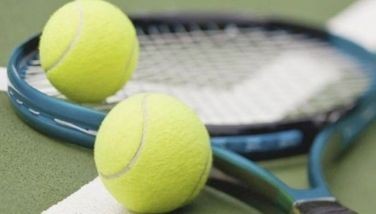Golf Rules
![]() Albert Einstein is Time magazine's Person of the Century. His equation,
E=mc2 (energy equals the mass multiplied by the speed of light squared), is
probably the best known to us laymen -- and also the least understood.
Nevertheless, our blind faith in men of science leaves us no room for doubt
that this supposedly far-reaching equation is indeed the key to an
understanding of the universe, no matter how mystifying his theory of
relativity remains.
Albert Einstein is Time magazine's Person of the Century. His equation,
E=mc2 (energy equals the mass multiplied by the speed of light squared), is
probably the best known to us laymen -- and also the least understood.
Nevertheless, our blind faith in men of science leaves us no room for doubt
that this supposedly far-reaching equation is indeed the key to an
understanding of the universe, no matter how mystifying his theory of
relativity remains.
Don't look to me for enlightenment on any aspect of this simple yet puzzling equation, though; I, too, am in the dark here. But perhaps I can apply the equation to golf club design. At any rate, I'm foolish enough to make the attempt, hoping some bright reader will correct me if I'm wrong.
Since energy equals the mass multiplied by its speed squared, if you double the club's weight, you merely double the ball's distance, but if you double clubhead speed, you quadruple the ball's flight. That's why designers -- using space age metals and plastics -- have reduced the weight of golf clubs.
Increasing the weight of the club would be counterproductive, for any increase in weight would be more than offset by a corresponding slowdown in how fast the club could be swung. On the other hand, any lightening of the club would enable one to swing the club faster, resulting in a corresponding fourfold gain in the ball's distance.
Pardon me for trivializing and probably misrepresenting the work of Einstein, the humane genius, whose deep moral sense perceived God in the vast complexity of the cosmos.
"A spirit is manifest in the laws of the universe," Einstein once said, "in the face of which we, with our modest powers, must feel humble." He believed, as quoted by Time, in a "God who reveals himself in the harmony of all that exists." Searching for God's design, he said, was "the source of all art and all science."
But to return to the mundane subject of golf club design, how about a truly radical change, to make clubs really idiot-proof? Ah, that's where the designers would exceed the parameters set forth in Rule 4 and Appendix II. Why not, then, a more bouncy ball that could be struck twice as far? That, too, is outlawed under Rule 5 and Appendix III.
One day, however, will the Royal and Ancient Golf Club of St. Andrews, faithful keeper of the game's traditions -- including its original difficulties and challenges -- finally give way to the tireless hucksters, shrewdly utilizing the laws of physics to drastically change the design of the game's implements, purportedly for finer shot-making but actually to better separate the duffer from his money?
Not in my lifetime, I hope!
What if your clubhead pushes sand away from behind the ball during your backswing for the stroke, would that be illegally improving your lie?
Before tackling this week's query, let us first be clear that the term "through the green" refers to the whole area of the course except the teeing ground and putting green of the hole being played and all hazards on the course. Hence, so-called fairways and rough, and the fringes of putting greens are deemed "through the green" (where you may not remove sand).
Next, we must bear in mind that "sand and loose soil are loose impediments on the green but not elsewhere" -- which means that it's OK to brush them away on the green but it would be illegal to do so elsewhere. Elsewhere, of course, includes the fringe of the green.
Now, you see why the sandy top-dressing has caused some concern at the Cebu Country Club: they know one may not brush sand away near a ball lying on the fringe.
Q. [from Rene P. Sarmiento, [email protected]] In the process of sanding greens, a generous amount is spread on the fringes as well. In the process of making a stroke (the ball is not on the green), if you scrape the sand on your backswing, is there a penalty?
A. No penalty. Although, in general, you are not allowed to improve your lie or the area of your intended swing, Rule 13-2 gives instances when you may do so. One such case is "in making a stroke or the backward movement for [your] club for a stroke."
Here's Decision 13-2/9 to further clarify the point:
Q. A player's ball lies in a sandy area through the green and there is a mound of sand a few inches behind his ball. The player makes his stroke and in the process he removes the mound of sand with the clubhead on his backswing, improving his lie. Is the player subject to penalty?
A. No, provided he did not ground his club other than lightly and that he took a normal backswing.
Fax questions & comments to 521-8582 or E-mail to [email protected]
- Latest
- Trending


























